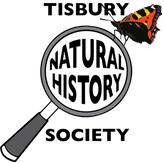|
I asked Andrew Graham what brought him to set up his moth trap, which has given us the photos of those beautiful creatures. In response, Andrew says:
'So much of what we know about our wildlife relies upon volunteers recording what they see in their gardens and local area. Combined with the sightings of numerous other recorders across the country, this gives scientists data with which to assess which species are declining or increasing in number. It will also show up how species respond to weather - for example a hot summer, or an especially cold or wet winter - as well as long-term trends like climate or land use change. I have been doing weekly counts of birds in my garden for several years now, and undertake butterfly recording at Tuckingmill and elsewhere in south west Wiltshire. It was natural to extend this to moths, although I could recognise relatively few of the day-flying ones. 'Just before lockdown, I saw that Butterfly Conservation, the wildlife charity that promotes the conservation of butterflies and moths, was promoting a relatively cheap and simple moth trap. Even better, they benefited through a donation from the vendor for each trap sold. I bought one and have been using it on appropriate nights since. The bright light attracts the moths which hide in the box below it, sheltering beneath the egg boxes placed there until I come to open it in the morning. I only do it every few nights as it gives the moths a chance to feed and mate, and I go out and check the trap early in the morning so they are trapped for as short a time as possible. 'Very few were attracted to the light earlier in spring but as the nights have become a bit warmer there have been good numbers for me to sort through with my identification guides. I photograph them as that gives me the chance to really examine the markings and compare them with the guidebook without distressing the insect which can be released. There is a useful Wiltshire Butterflies and Moths Facebook group where people with much more expertise can give advice and help with identification. It's great to see and hear what people elsewhere are seeing, to get a picture of how the season is developing across the county and whether what we are seeing in and around Tisbury is representative of what is going on elsewhere.' Comments are closed.
|
Photo: Avocets (Izzy Fry)
The headers display photos taken by our members. Do get in touch via the Contact Form if you'd like to submit a photo for selection.
Archives
May 2024
Categories
All
|

 RSS Feed
RSS Feed